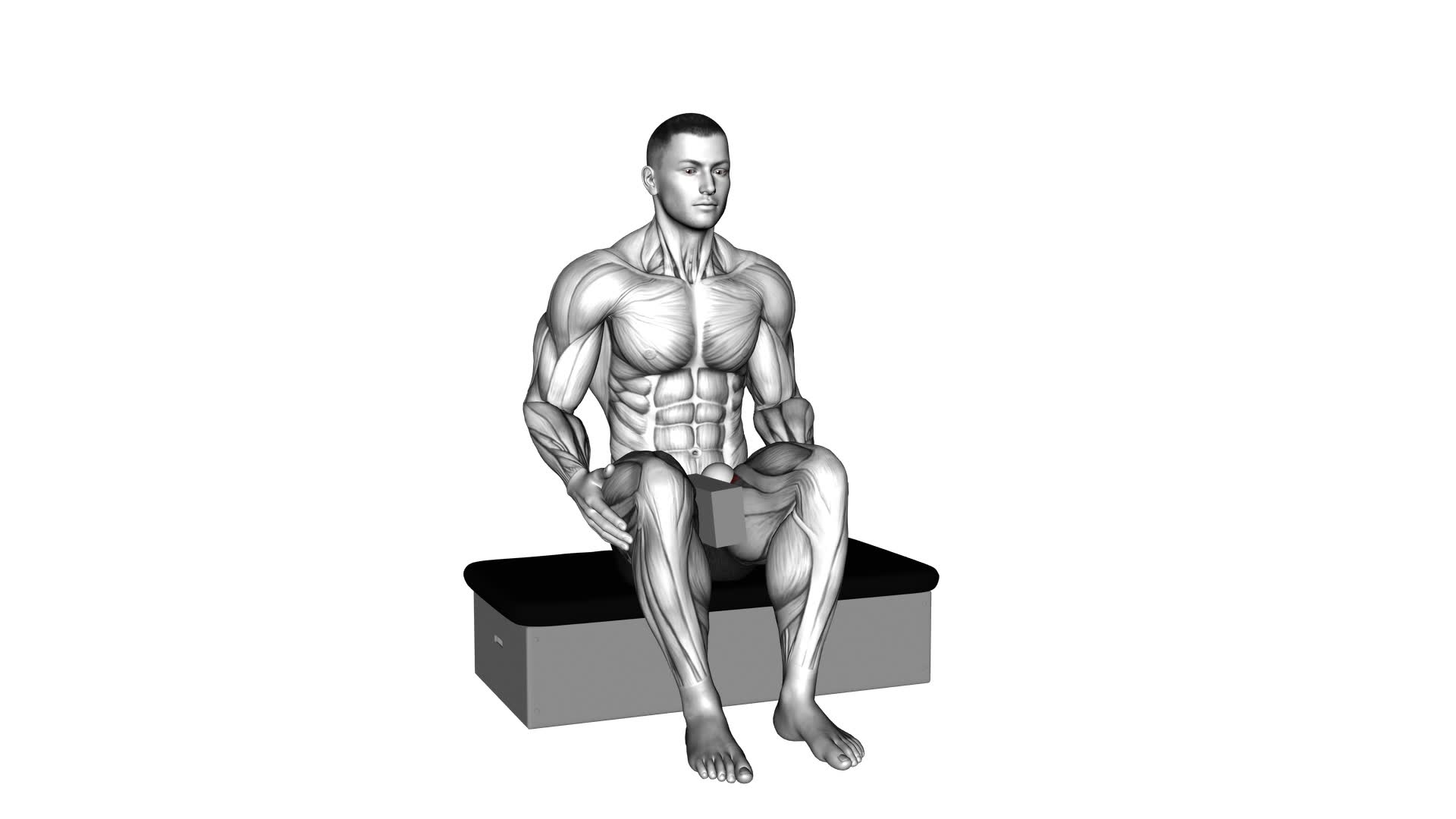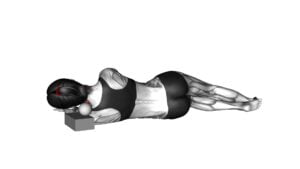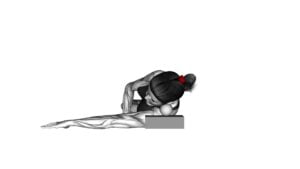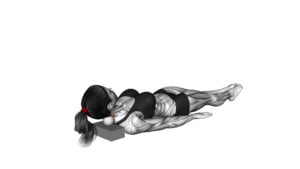Roll Ball Seated Pectineus Activation (male) – Video Exercise Guide & Tips

Are you looking to activate your pectineus muscles and improve your lower body strength? Look no further than Roll Ball Seated Pectineus Activation.
Watch This Exercise Video
This exercise targets the pectineus specifically, helping you achieve better stability and mobility in your hips. By following the proper form and technique, you can maximize the effectiveness of this exercise.
In this article, we provide you with a video exercise guide, tips, and variations to help you get the most out of Roll Ball Seated Pectineus Activation.
Key Takeaways
- Roll Ball Seated Pectineus Activation targets the pectineus muscle for improved stability and mobility in the hips.
- It enhances lower body strength, stability, balance, and power.
- Incorporating this exercise into a comprehensive leg workout routine can benefit movements like squats, lunges, and running.
- Gradually increasing the difficulty of the exercise as you progress is important for continued improvement.
Benefits of Roll Ball Seated Pectineus Activation
To maximize the benefits of Roll Ball Seated Pectineus Activation, you should incorporate this exercise into your regular workout routine. The pectineus muscle, located in the inner thigh, plays a crucial role in overall lower body strength. By activating and strengthening the pectineus, you can improve your stability, balance, and power in movements such as squats, lunges, and running.
To incorporate roll ball seated pectineus activation into a comprehensive leg workout routine, begin by sitting on a stability ball with your feet hip-width apart and your knees bent at a 90-degree angle. Place a small exercise ball between your knees, engaging your inner thigh muscles. Next, slowly roll the ball inwards using your inner thighs, squeezing it tightly. Hold this position for a few seconds, then release and repeat for several reps.
By adding this exercise to your leg workout routine, you can specifically target and strengthen the pectineus muscle. This won't only enhance your lower body strength but also improve your overall athletic performance. Remember to start with a weight or ball size that's appropriate for your fitness level, and gradually increase the difficulty as you progress.
Incorporating roll ball seated pectineus activation into your routine will yield significant benefits for your lower body strength and functional movement abilities.
Proper Form and Technique for Roll Ball Seated Pectineus Activation
Now let's delve into how to properly perform the Roll Ball Seated Pectineus Activation exercise to ensure maximum effectiveness and prevent injury. Follow these steps to execute the exercise correctly:
- Position yourself: Sit on the floor with your legs extended straight in front of you. Place a foam roller or a small exercise ball between your ankles and squeeze it gently to hold it in place.
- Engage your core: Activate your abdominal muscles by pulling your belly button in towards your spine. Maintain this engagement throughout the exercise to stabilize your body.
- Begin the movement: Slowly bend your knees and bring them towards your chest, using the ball or roller as resistance. Pause for a moment at the top of the movement, then slowly lower your legs back to the starting position.
Common misconceptions: One common misconception is that you need to forcefully squeeze the ball or roller between your ankles. However, it's important to maintain a gentle squeeze to avoid excessive strain on the pectineus muscle.
Modifications and adaptations: If you find it challenging to keep your legs straight, you can slightly bend your knees during the exercise. Additionally, you can use a softer or smaller ball or roller if you experience discomfort or pain.
Now that you know the proper form and technique for Roll Ball Seated Pectineus Activation, let's move on to the next section to learn about common mistakes to avoid during this exercise.
Common Mistakes to Avoid During Roll Ball Seated Pectineus Activation
Avoiding these common mistakes will help you maximize the effectiveness of the Roll Ball Seated Pectineus Activation exercise. To ensure proper form and technique, it's important to be aware of these mistakes and correct them accordingly.
One common mistake is failing to maintain a neutral spine throughout the exercise. It's crucial to keep your back straight and avoid rounding or arching it. This ensures that the activation of the pectineus muscle is targeted and maximized. Additionally, be mindful of not slouching or leaning forward, as this can put unnecessary strain on the lower back and reduce the effectiveness of the exercise.
Another mistake to avoid isn't engaging the core muscles. The roll ball seated pectineus activation exercise requires stability and control, which is achieved by activating the core muscles. By engaging your core, you stabilize your body and maintain proper alignment during the exercise.
Lastly, rushing through the exercise or using momentum is another common mistake. It's important to perform the exercise slowly and with control, focusing on the contraction of the pectineus muscle. Rushing or using momentum can lead to improper form and reduce the effectiveness of the exercise.
Tips for Maximizing the Effectiveness of Roll Ball Seated Pectineus Activation
Are you looking for ways to maximize the effectiveness of your Roll Ball Seated Pectineus Activation exercise? Here are three tips to help you get the most out of your workout:
- Avoid common misconceptions:
One common misconception is that you need to use a heavy ball to activate your pectineus muscle effectively. However, using a ball that's too heavy can put unnecessary strain on your joints and may lead to injury. Instead, choose a ball that's challenging but still allows you to maintain proper form throughout the exercise.
- Modify the exercise to suit your needs:
If you find it difficult to balance on the ball, you can modify the exercise by placing your feet on the ground. This modification will provide more stability and allow you to focus on activating your pectineus muscle without compromising your safety.
- Adapt the exercise as you progress:
As you become more comfortable with the Roll Ball Seated Pectineus Activation exercise, you can increase the difficulty by using a larger ball or adding resistance. This will help to continually challenge your muscles and promote further strength and activation.
Variations and Progressions for Roll Ball Seated Pectineus Activation
To further enhance your Roll Ball Seated Pectineus Activation exercise, it's important to explore various variations and progressions that can intensify your workout. By incorporating these variations and progressions into your routine, you can target the pectineus muscle more effectively and achieve better results.
One variation you can try is the single-leg roll ball seated pectineus activation. Instead of using both legs, focus on one leg at a time. This will increase the workload on the pectineus muscle and provide a greater challenge.
Another variation is to perform the exercise on an unstable surface, such as a Bosu ball or a balance board. This will engage your core muscles and further activate the pectineus.
As you progress in your training, you can also increase the difficulty of the exercise by adding resistance. You can do this by using ankle weights or resistance bands. These added resistances will require your pectineus muscle to work harder, leading to greater muscle activation and strength gains.
Remember, it's important to start with the basic roll ball seated pectineus activation exercise and gradually progress to more advanced variations and progressions. This will ensure that you maintain proper form and avoid any potential injuries.
Incorporating these variations and progressions into your routine won't only keep your workouts challenging and exciting, but also help you achieve optimal results in strengthening and activating the pectineus muscle.
Frequently Asked Questions
How Long Should I Hold Each Position During the Roll Ball Seated Pectineus Activation Exercise?
To properly perform the roll ball seated pectineus activation exercise, it's important to hold each position for an appropriate amount of time. Holding each position for around 10 to 15 seconds is recommended to maximize the effectiveness of the exercise.
This allows your pectineus muscles to fully activate and engage. Remember to maintain proper form throughout the exercise for optimal results.
Can I Perform the Roll Ball Seated Pectineus Activation Exercise if I Have a Previous Knee Injury?
Before attempting the roll ball seated pectineus activation exercise, individuals with knee injuries should consult a healthcare professional. It's important to determine if modifications can be made to accommodate your specific condition.
While the exercise may be beneficial for strengthening the pectineus muscle, it's crucial to prioritize the health and safety of your knees. Seek guidance from a professional who can provide personalized recommendations based on your injury and overall fitness level.
Is It Necessary to Warm up Before Starting the Roll Ball Seated Pectineus Activation Exercise?
Before starting the roll ball seated pectineus activation exercise, it's necessary to warm up to reap the benefits.
Warm up exercises help prepare your body for the workout ahead, increasing blood flow to your muscles and reducing the risk of injury.
Common mistakes to avoid during warm up include rushing through it or skipping it altogether.
Take the time to properly warm up to maximize the effectiveness of the roll ball seated pectineus activation exercise and ensure a safe workout.
How Often Should I Include the Roll Ball Seated Pectineus Activation Exercise in My Workout Routine?
Including the roll ball seated pectineus activation exercise in your workout routine can provide several benefits.
It helps to strengthen and activate the pectineus muscle, which is important for hip stability and mobility.
This exercise also helps improve posture and balance.
To perform it correctly, make sure to maintain proper form and technique. Keep your back straight, engage your core, and focus on using your hip muscles to roll the ball.
Incorporate this exercise into your routine 2-3 times a week for optimal results.
Can I Use a Substitute for the Roll Ball if I Don't Have One?
If you don't have a roll ball, there are substitute options and modifications you can try for the Roll Ball Seated Pectineus Activation exercise.
You can use a stability ball or even a foam roller as alternatives.
Alternatively, you can modify the exercise by performing a seated hip abduction exercise using a resistance band or cable machine.
Remember to consult with a fitness professional to ensure proper form and technique for these substitute options.
Conclusion
In conclusion, roll ball seated pectineus activation is a beneficial exercise for targeting and strengthening the pectineus muscle. By following proper form and technique, avoiding common mistakes, and implementing tips for maximizing effectiveness, individuals can effectively engage and activate their pectineus muscles.
Additionally, variations and progressions can be incorporated to challenge and further enhance the exercise. Incorporating roll ball seated pectineus activation into a workout routine can help improve overall lower body strength and stability.

Author
Years ago, the spark of my life’s passion ignited in my mind the moment I stepped into the local gym for the first time. The inaugural bead of perspiration, the initial endeavor, the very first surge of endorphins, and a sense of pride that washed over me post-workout marked the beginning of my deep-seated interest in strength sports, fitness, and sports nutrition. This very curiosity blossomed rapidly into a profound fascination, propelling me to earn a Master’s degree in Physical Education from the Academy of Physical Education in Krakow, followed by a Sports Manager diploma from the Jagiellonian University. My journey of growth led me to gain more specialized qualifications, such as being a certified personal trainer with a focus on sports dietetics, a lifeguard, and an instructor for wellness and corrective gymnastics. Theoretical knowledge paired seamlessly with practical experience, reinforcing my belief that the transformation of individuals under my guidance was also a reflection of my personal growth. This belief holds true even today. Each day, I strive to push the boundaries and explore new realms. These realms gently elevate me to greater heights. The unique combination of passion for my field and the continuous quest for growth fuels my drive to break new ground.







